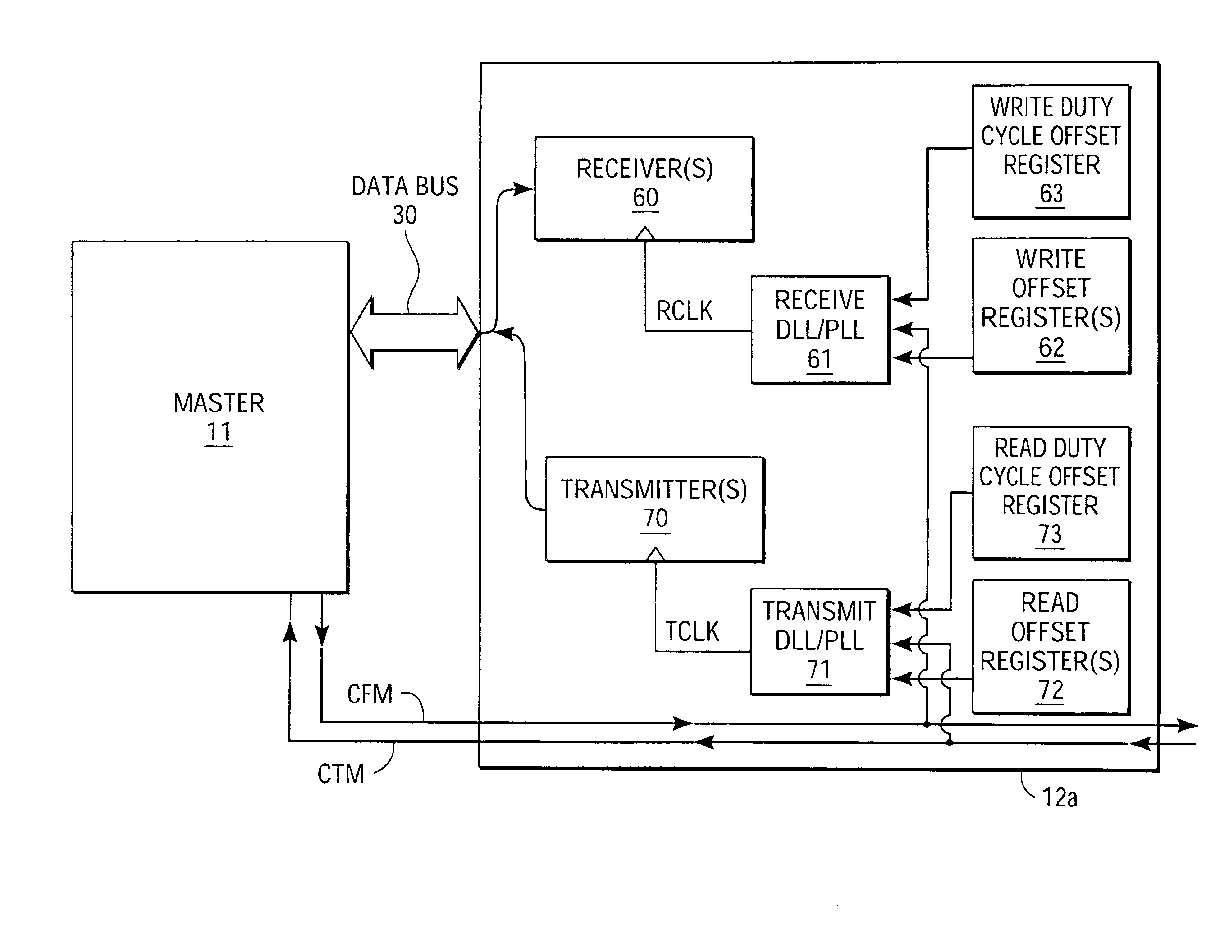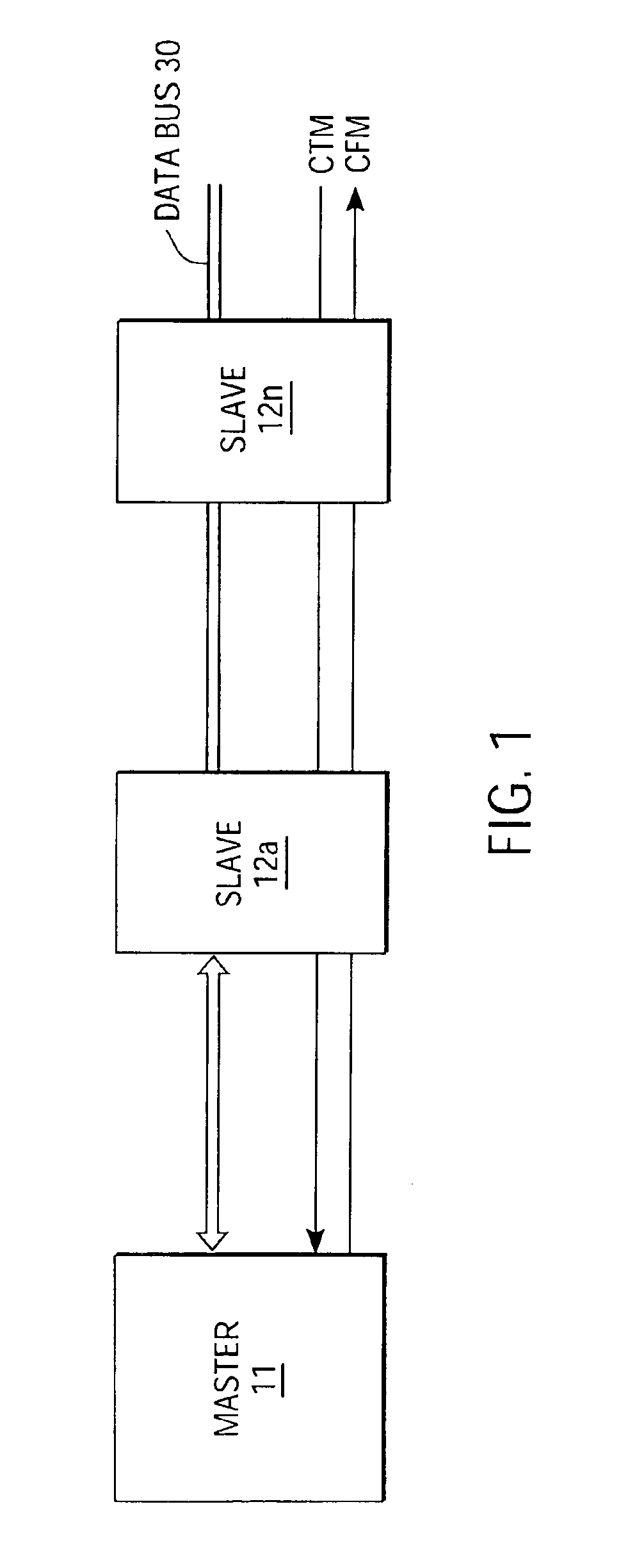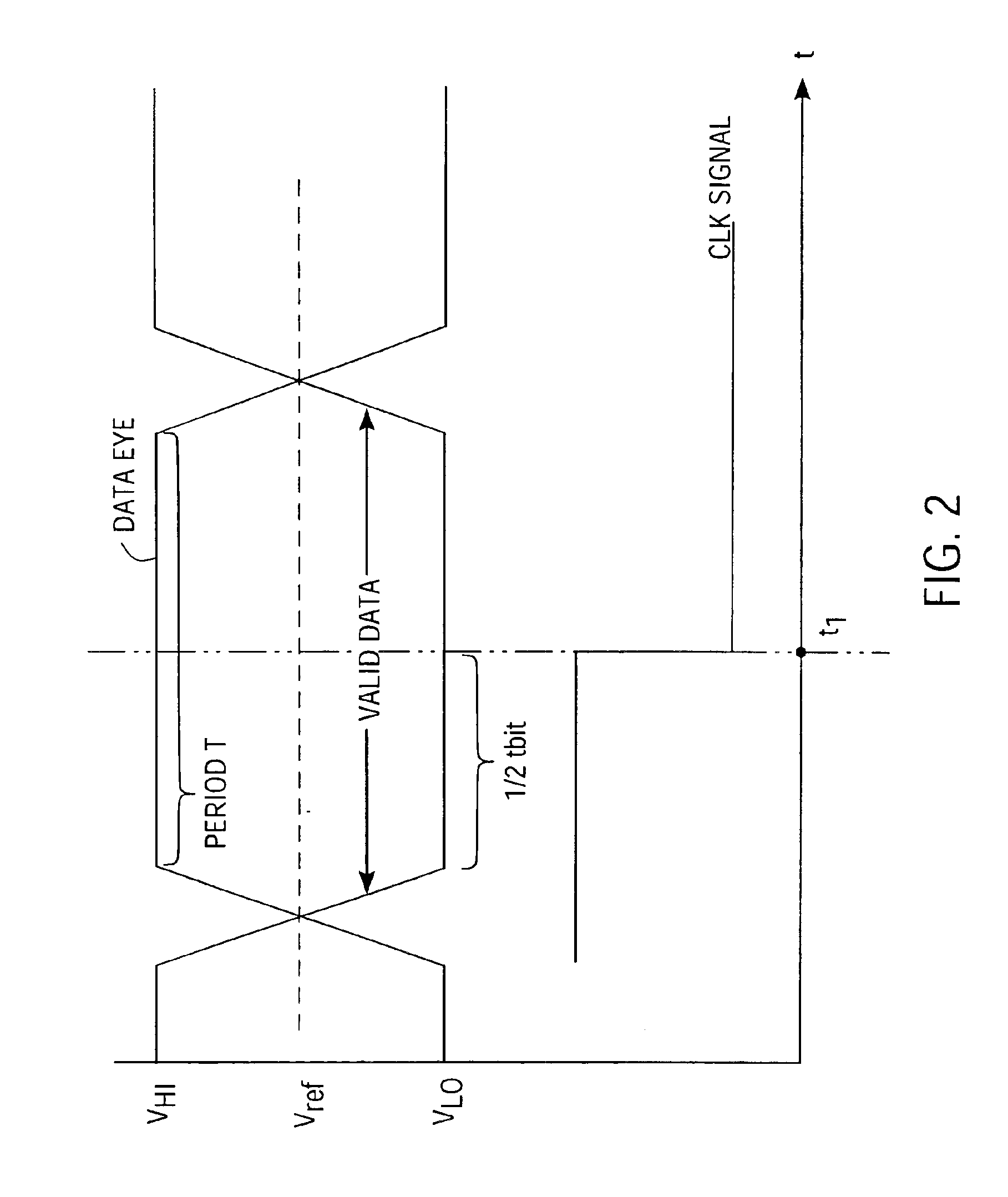Integrated circuit with timing adjustment mechanism and method
a timing adjustment and integrated circuit technology, applied in the field of bus systems, can solve the problems of affecting the overall system performance of the system,
- Summary
- Abstract
- Description
- Claims
- Application Information
AI Technical Summary
Benefits of technology
Problems solved by technology
Method used
Image
Examples
Embodiment Construction
[0063]In order to better understand the use, implementation, and associated benefits of the present invention, a general bus system readily adapted to the present invention will be described with reference to FIG. 5. In the block diagram of FIG. 5, a bus system 10, shown in some additional detail with reference to the bus system shown in FIG. 1, comprises bus 30 coupled between a master 11 and a plurality of slaves 12a-12n. Bus 30 is a high speed, low voltage swing bus comprising multiple signal lines and transferring data between slaves 12a-12n and master 11.
[0064]Master 11 and each slave 12a-12n typically include an interface circuit (not shown) coupling the respective device to bus 30. Within bus system 10, a master can communicate with another master (not shown) and with slaves 12a-12n. In contrast, slaves only communicate with masters.
[0065]Master 11 contains intelligence and generates commands to the slaves. Master 11 may be a microprocessor, a digital signal processor, a grap...
PUM
 Login to View More
Login to View More Abstract
Description
Claims
Application Information
 Login to View More
Login to View More - R&D
- Intellectual Property
- Life Sciences
- Materials
- Tech Scout
- Unparalleled Data Quality
- Higher Quality Content
- 60% Fewer Hallucinations
Browse by: Latest US Patents, China's latest patents, Technical Efficacy Thesaurus, Application Domain, Technology Topic, Popular Technical Reports.
© 2025 PatSnap. All rights reserved.Legal|Privacy policy|Modern Slavery Act Transparency Statement|Sitemap|About US| Contact US: help@patsnap.com



